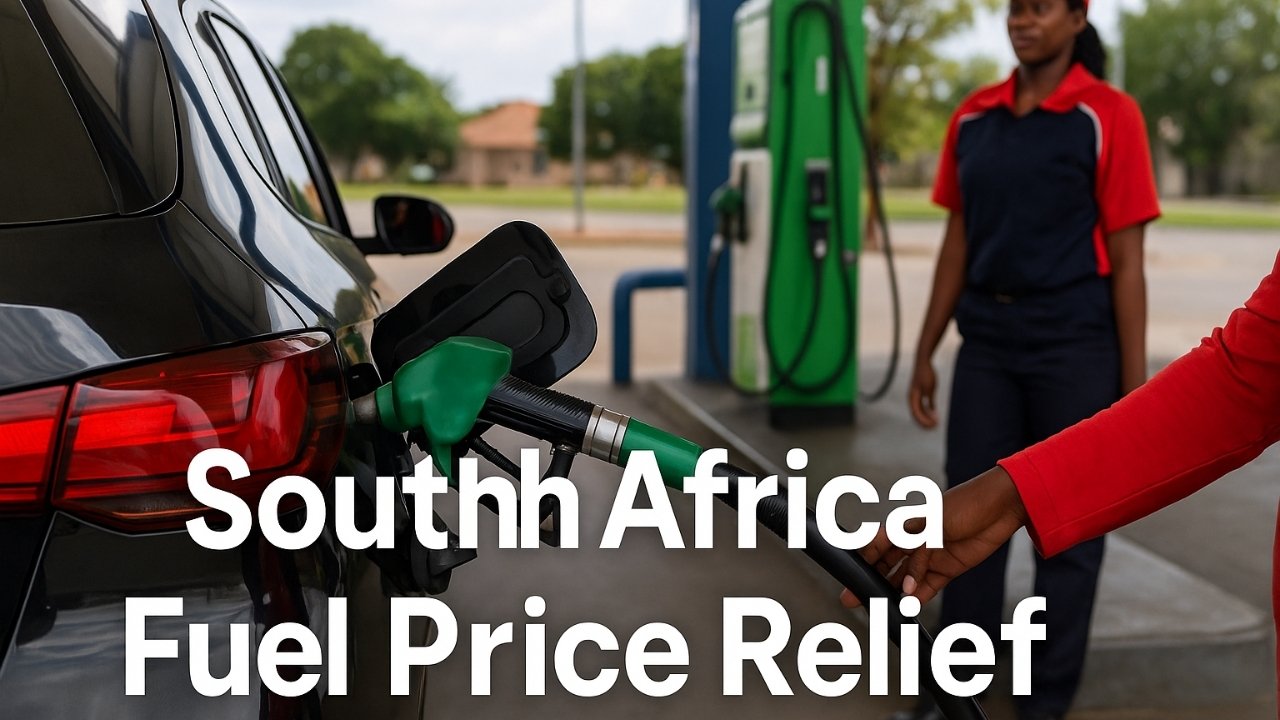South African drivers have reason to breathe a sigh of relief this month as fuel prices see a sharp and meaningful reduction. Announced officially by the Department of Mineral Resources and Energy (DMRE), these decreases will affect both petrol and diesel prices from May 7 onward. This change comes at a critical time when household budgets are under pressure from inflation and rising living costs, especially for commuters and businesses reliant on fuel for daily operations.
The drop is not an isolated local event it is closely tied to international oil market shifts, global economic pressures, and domestic pricing strategies. For months, oil market watchers have pointed to falling Brent crude prices, and South Africa’s latest adjustment confirms how those global pressures are now translating into local relief. The DMRE’s monthly price setting has validated predictions made earlier, and South African motorists are now set to benefit from meaningful cost savings at the pumps.
Clear Breakdown of Fuel Price Adjustments

One of the most immediate ways to grasp the scale of this month’s fuel price cuts is by looking at the numbers. Below is a detailed table summarizing the changes across key fuel types:
| Fuel Type | Change in Price |
|---|---|
| 93 Octane Petrol | Decrease of 22c/l |
| 95 Octane Petrol | Decrease of 22c/l |
| Diesel 0.05% (bulk) | Decrease of 42c/l |
| Diesel 0.005% (bulk) | Decrease of 41c/l |
| Illuminating Paraffin | Decrease of 31c/l |
| LPGAS | Increase of 46c/kg |
While petrol and diesel both see strong cuts, LPGAS stands out with a price increase, reflecting a different supply-demand dynamic in the liquefied gas market.
For many lower-income households, the reduction in illuminating paraffin will be particularly beneficial, as it remains a critical source of energy for lighting and cooking.
Main Global Factors Behind the Decrease
Several important international factors have combined to drive this month’s local price relief. These include:
✅ Decline in Global Oil Prices: Brent crude fell sharply from $71.04 to $66.40 per barrel, largely driven by fears of slowing global economic activity.
✅ Trade and Tariff Pressures: U.S. tariff actions raised concerns about reduced global trade, thereby lowering crude oil demand forecasts.
✅ OPEC+ Production Dynamics: Increased output from some oil-producing countries has added to the global supply, helping push prices downward.
✅ South African Rand Movement: Even though the rand weakened (averaging R18.83/USD, up from R18.29), the lower oil prices still brought net local savings.
These combined pressures have outweighed currency depreciation, ensuring that the net impact is a meaningful drop in fuel prices for South African motorists.
Updated Pump Prices for Inland and Coastal Regions
Fuel prices vary depending on location due to transport, storage, and logistical costs. Below is a table showing the new pump rates as set by the DMRE for key regions:
| Region | 95 Octane Petrol | Diesel 0.05% |
|---|---|---|
| Inland (e.g., Gauteng) | R21.40/l (down from R21.62) | R18.90/l (down from R19.32) |
| Coastal Areas | R20.61/l (down from R20.83) | R18.11/l (down from R18.53) |
The inland-coastal difference arises mainly from the additional transport costs required to bring fuel to inland regions.
Unpacking Fuel Tax and Levy Components
Even with global oil prices dropping, the taxes and levies applied to fuel in South Africa remain unchanged, keeping a significant portion of the price fixed. As of March 2025, the following components make up the fuel price structure:
✅ General Fuel Levy: 396 cents per litre (petrol), 384 cents per litre (diesel)
✅ Road Accident Fund (RAF) Levy: 218 cents per litre (both petrol and diesel)
✅ Carbon Fuel Levy: Increased by 3 cents per litre, now 399 cents/litre (petrol) and 387 cents/litre (diesel)
These levies, set by the government, play a major role in shaping the final price seen at the pump. Even when international oil prices drop, these fixed costs ensure that only part of the reduction is passed directly to consumers.
The Uncertain Road Ahead: Will the Relief Last?
While this month’s fuel price reductions are certainly a positive development, the future remains unpredictable. Several key factors could quickly reverse these savings:
- OPEC+ Production Adjustments: Should oil-producing nations cut back on production to prop up prices, global oil costs could rebound sharply.
- Geopolitical Risks: Events such as conflicts in oil-producing regions or new international sanctions could disrupt supply and drive prices upward.
- Currency Fluctuations: A continued weakening of the rand against the U.S. dollar would make imports, including oil, more expensive, offsetting gains made from lower oil prices.
- Demand Surges: If global demand unexpectedly rebounds, prices may surge again, wiping out the recent relief.
Motorists and businesses are therefore advised to remain cautious and avoid assuming that the current downward trend will continue uninterrupted.
Short-Term Gains, Long-Term Watchfulness
The recent sharp drop in South African fuel prices provides a welcome moment of breathing space for households and companies grappling with rising expenses. For many, especially those who rely on daily transport or who run fuel-intensive businesses, this decrease offers a meaningful, if temporary, improvement to monthly budgets.
However, the global oil market is notoriously unpredictable, and the South African economy faces its internal pressures. Whether these price cuts signal a lasting trend or simply a brief dip remains to be seen. For now, motorists can take advantage of the savings while remaining vigilant for future changes.